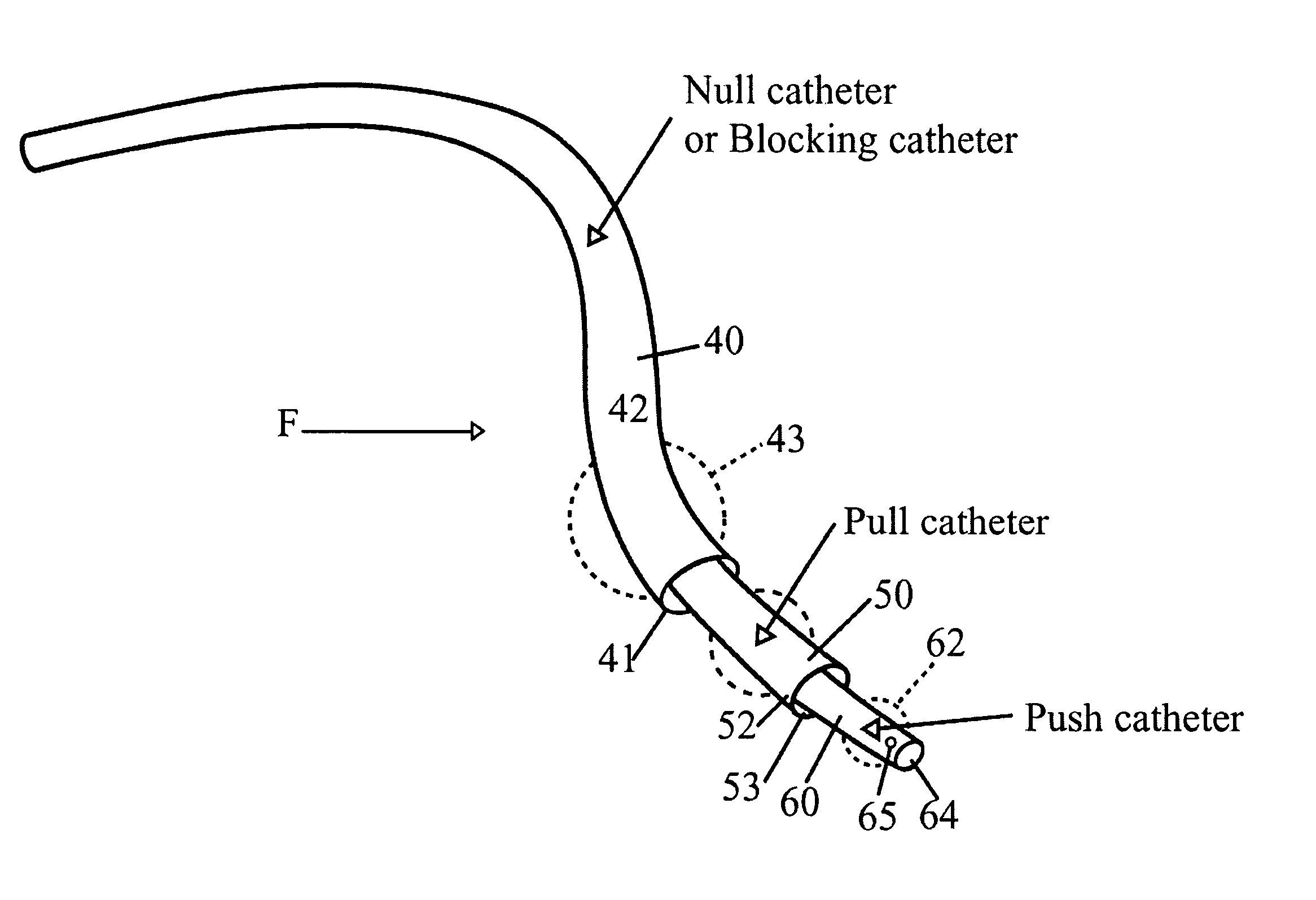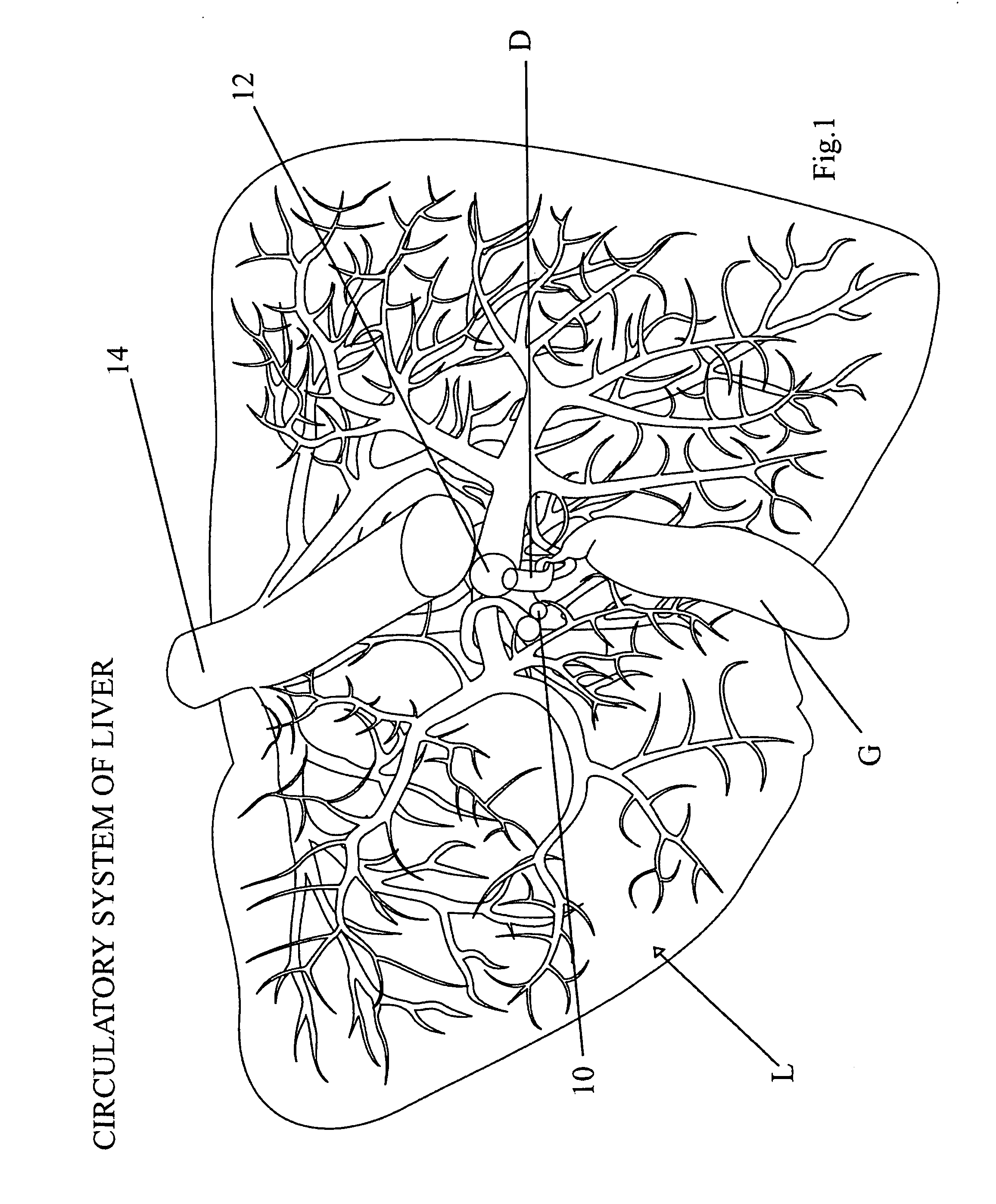Computerized system for monitored retrograde perfusion of tumor sites
a retrograde perfusion and computerized technology, applied in the field of computerized methods and systems for monitoring delivery of tumor sites, can solve the problems of hampered attempts, uncertainty or blind spots in the delivery procedure, and hesitancy to attempt widespread experimentation using the techniques of these patents, and achieve the effect of high degree of control and integration
- Summary
- Abstract
- Description
- Claims
- Application Information
AI Technical Summary
Benefits of technology
Problems solved by technology
Method used
Image
Examples
Embodiment Construction
[0033]In the drawings, a photographic model of the circulatory system of blood flow the liver of an animal, in this case a human, is shown in FIG. 1. The liver L is located in the body in communication through the common bile duct D with the gallbladder G. As indicated at 10, the hepatic artery connects to and transports blood into the liver L for the purpose of bile production, protein production, blood detoxification and other liver functions.
[0034]In the treatment of tumors in other organs, a similar approach applies. In the case of a tumor of the kidney, for example, the renal artery carries blood from the aorta to the kidney while the renal vein carries blood from the kidney to the inferior vena cava. For the purpose of retrograde perfusion, access to a tumor of the kidney would be via the inferior vena cava to the renal vein.
[0035]Further, retrograde perfusion can also be performed via percutaneous access to any organ whereby the venous drainage of the target organ is accessed...
PUM
 Login to View More
Login to View More Abstract
Description
Claims
Application Information
 Login to View More
Login to View More - R&D
- Intellectual Property
- Life Sciences
- Materials
- Tech Scout
- Unparalleled Data Quality
- Higher Quality Content
- 60% Fewer Hallucinations
Browse by: Latest US Patents, China's latest patents, Technical Efficacy Thesaurus, Application Domain, Technology Topic, Popular Technical Reports.
© 2025 PatSnap. All rights reserved.Legal|Privacy policy|Modern Slavery Act Transparency Statement|Sitemap|About US| Contact US: help@patsnap.com



